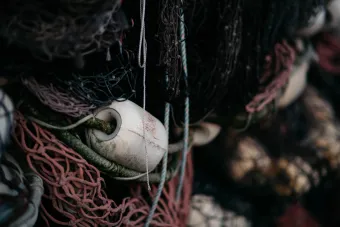
The first assessment of global deep-sea trawling using new estimates of catch data has revealed that 42% more fish have been caught over the last 60 years than was reported to the Food and Agriculture Organisation of the United Nations.
“Our study shows that there is systematic under-reporting of the real catch, which has led to the removal of nearly 25 million tonnes of fish from the deep-sea in total. These estimates need to be taken into account when making decisions about fisheries management.” said lead author Lissette Victorero, from the National Oceanography Centre (NOC).
The study, published today in Frontiers in Marine Science, shows that of the 42% of undocumented deep-sea fish catches, half were discarded fish and half were unreported landings.
Lissette and colleagues from the University of Hawaii examined the historical catch of 72 deep-sea fish species using data gathered by the Sea Around Us, which is a unique research initiative reconstructing global fish catch. The reconstructions use a variety of techniques to estimate the number of fish caught globally, including talking to local experts and agencies.
“Deep-sea trawling below 400 metres accounts for just 0.5% of the global fish trade. Yet it can wipe out whole ecosystems as the heavy gear is dragged along the seabed catching everything and anything, including the young, immature fish required to replenish stock in a fishery” continued Lissette.
Deep-water fish also often live around seamounts and ridges that can be left devoid of life when fished by deep-sea bottom trawls. As the trawls are dragged along the seabed, they destroy long-lived ecosystems that include fragile cold-water corals and sponges along with other fauna such as sea cucumber and anemones.
Professor Les Watling, from the University of Hawaii, and an author of the study explained that most of the fisheries they analysed followed a typical “boom and bust” cycle, lasting for less than a decade or two prior to collapsing, because deep-sea fish generally have low fecundity, grow very slowly and are highly vulnerable to overexploitation.
This research was part of a collaboration between the National Oceanography Centre (NOC), the University of Hawaii and the Sea Around Us project, enabled by the SPITFIRE DTP, and forms part of the NOC’s ongoing research into the future productive capacity of the ocean.
The study “Out of sight, but within reach: A global history of bottom-trawled deep-sea fisheries from >400 m depth” will be published in Frontiers in Marine Science at 10am today, doi: 10.3389/fmars.2018.00098
The link below shows an animation of the changing pattern of deep-sea trawling through time with the size and colour of the country reflecting the magnitude of the catch in tons.